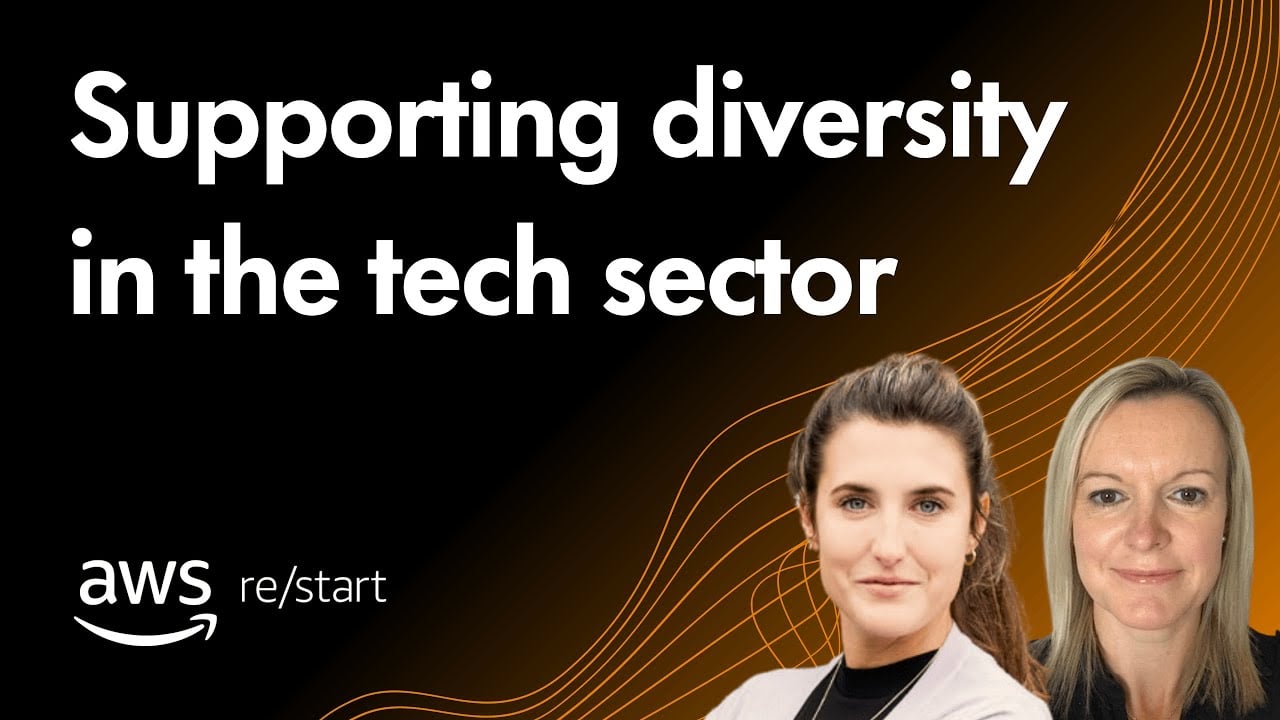Women make up nearly half of the workforce, yet only occupy 20% of roles in the tech sector. This begs the question: how can employers leverage educational routes to rebalance diversity in tech? Furthermore, what more can they do to support women in tech to achieve their potential?
Dee Robertson (Senior Talent Solutions Manager, Robert Half) recently hosted an event alongside Robert Half colleagues in AWS and Protiviti to show how the free workforce development training programme AWS re/Start can prepare individuals to launch their tech careers.
Dee was joined by Claire Spiller (Lead, AWS re/Start Programme EMEA), James Fox (Director, Enterprise Cloud Transformation, Protiviti), Richard Bull (Head of Projects and Consulting for Cloud Infrastructure Services, and Head of Early and Emerging Talent, Capgemini) and Nethmi Wickrama (DevOps Engineer, S&P Global).
Women in STEM: an untapped talent pool
The talent crunch is in full swing, especially where tech roles are concerned. Despite that, research for the Robert Half 2023 Salary Guide shows almost one-third (30%) of business leaders plan to hire for new full-time tech positions. With that in mind, businesses should embrace diverse hiring to widen their talent pool, if not for better inclusivity overall.
“There's a huge, well-educated workforce out there in STEM technologies that don't even access the workforce in tech,” says Claire. “A report I was reading the other day says that only 23% of STEM-educated women find themselves working in technology. So as an employer, there's a highly educated workforce out there, but we're not tapping into it at all.”
Claire also believes that a diverse workforce is more likely to attract strong talent — almost two-thirds (62%) of candidates would reject a job offer from an employer who doesn’t support diversity, equity, and inclusion. This is also true for women, who are more likely to apply for roles with employers who have a strong female presence in the workforce.
Read more: tech hiring trends for 2023
Diverse hiring to address the tech talent skills gap
It’s widely known that teams with better diversity in their ranks are more adept at problem-solving, innovation, and decision-making, which makes the gender imbalance in tech a crucial stumbling block for businesses hoping to retain a competitive edge.
“Both men and women bring valuable assets to the table, and I think that's why diversity is so important — having that difference and embracing that difference within a team”, says Dee.
“It's often considered that women have higher levels of emotional intelligence and collaboration abilities. Women will have a different way of thinking about challenges and how to address finding solutions. I think different approaches are a vital ingredient in a business to produce the best outcomes in a workforce.”
Initiatives to rebalance diversity in tech
Richard Bull’s experience training tech talent has shown a clear business reason to engage with training programmes and initiatives — better retention rates and access to a wider talent pool.
“You want to fish in more ponds. There is a talent challenge, and you want to be able to attract people into your organisation — if you can give them the training, you're going to be able to retain them,” he says.
Richard says hiring AWS re/Start Cloud Foundation graduates provides a skills development ‘landing zone’ to push off from. He believes the qualification gives people the confidence to pursue a career they might never have considered.
“Robert Half was working with the company that I did my AWS re/Start with,” says Nethmi. “I wasn't really interested in going into DevOps, but Dee talked me into it. She was very encouraging. It was the first job that I ever applied to after doing my AWS re/Start programme, and then a couple of days later, she called me and told me I’d been shortlisted, and I was so excited. I felt like that was one of the highlights of my life.”
Retaining and supporting female STEM talent
Protiviti is currently a 50/50 split of male and female from a cloud perspective. For James, the key is to have female role models within the company and to give staff access to those individuals.
“When we have female candidates, we strive to get females interviewing”, he says. “I think that is beneficial, can provide better perspectives, can help to build better rapport during the interviews, and maybe put the candidates at ease.”
James believes that employers should support tech talent with initiatives like a parents’ network, an open-door policy to senior female staff members, and by implementing sponsors (male or female) who can champion women in the workplace.
“A piece of reporting I picked up recently from McKinsey found that, by hiring females and attaching them to a senior sponsor, women felt 70% more heard”, says Claire. “Their ideas were 200% more likely to be implemented. So, from a business perspective, they're absorbing so many more ideas, and utilising those ideas, and retention was also really good off the back of that.”








